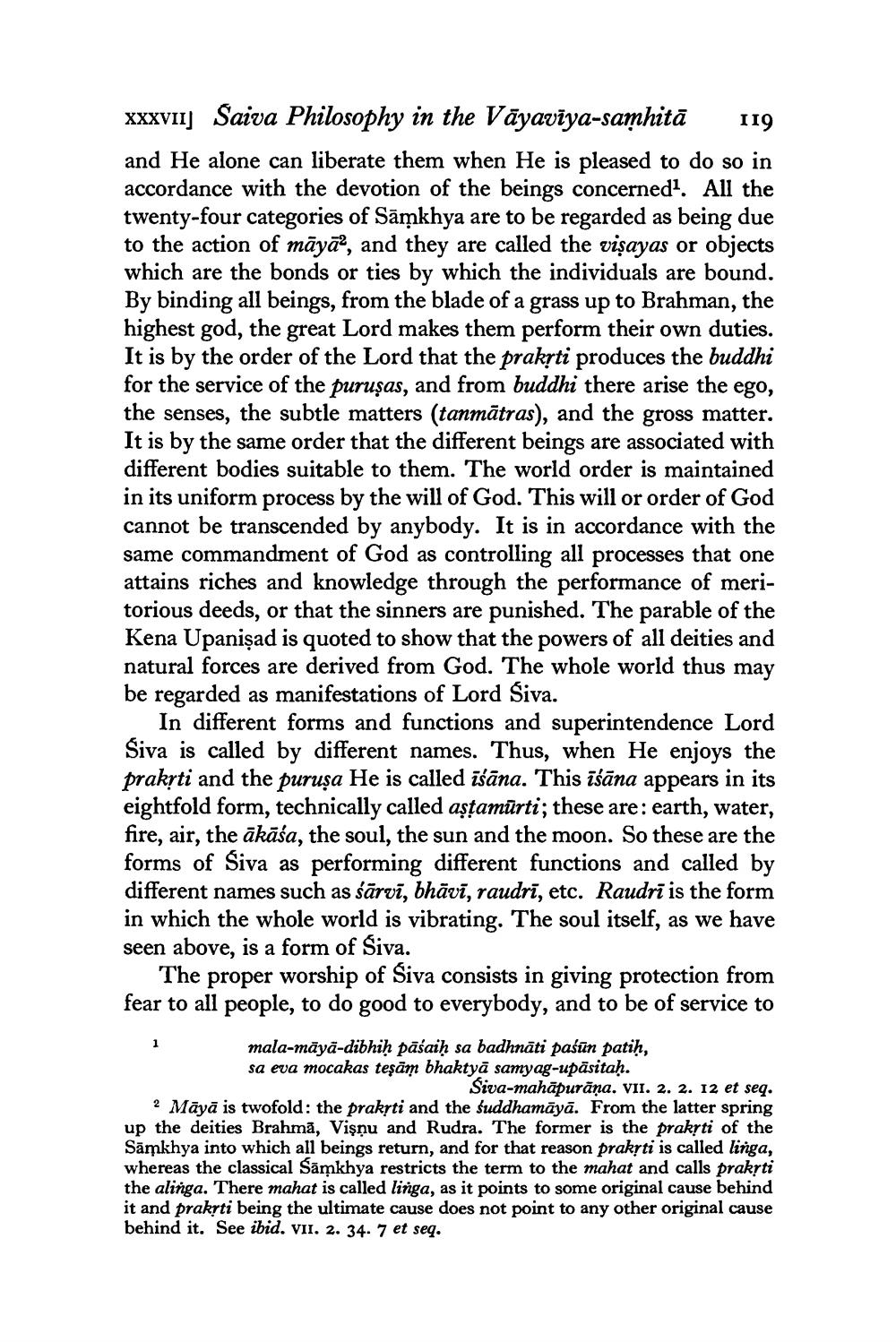________________
XXXVII] Saiva Philosophy in the Vāyavīya-samhitā 119 and He alone can liberate them when He is pleased to do so in accordance with the devotion of the beings concerned?. All the twenty-four categories of Sāņkhya are to be regarded as being due to the action of māyā?, and they are called the vişayas or objects which are the bonds or ties by which the individuals are bound. By binding all beings, from the blade of a grass up to Brahman, the highest god, the great Lord makes them perform their own duties. It is by the order of the Lord that the prakrti produces the buddhi for the service of the puruṣas, and from buddhi there arise the ego, the senses, the subtle matters (tanmātras), and the gross matter. It is by the same order that the different beings are associated with different bodies suitable to them. The world order is maintained in its uniform process by the will of God. This will or order of God cannot be transcended by anybody. It is in accordance with the same commandment of God as controlling all processes that one attains riches and knowledge through the performance of meritorious deeds, or that the sinners are punished. The parable of the Kena Upanişad is quoted to show that the powers of all deities and
tural forces are derived from God. The whole world thus may be regarded as manifestations of Lord Siva.
In different forms and functions and superintendence Lord Siva is called by different names. Thus, when He enjoys the prakrti and the puruşa He is called īsāna. This išāna appears in its eightfold form, technically called aştamūrti; these are: earth, water, fire, air, the ākāśa, the soul, the sun and the moon. So these are the forms of Siva as performing different functions and called by different names such as śārvī, bhāvī, raudrī, etc. Raudri is the form in which the whole world is vibrating. The soul itself, as we have seen above, is a form of Siva.
The proper worship of Siva consists in giving protection from fear to all people, to do good to everybody, and to be of service to
mala-māyā-dibhiḥ pāśaiḥ sa badhnāti pašūn patiḥ, sa eva mocakas teşām bhaktyā samyag-upāsitaḥ.
Siva-mahāpurāna. VII. 2. 2. 12 et seq. ? Māyā is twofold: the prakrti and the suddhamāyā. From the latter spring up the deities Brahma, Vişnu and Rudra. The former is the prakrti of the Sāmkhya into which all beings return, and for that reason prakyti is called linga, whereas the classical Sāmkhya restricts the term to the mahat and calls prakti the alinga. There mahat is called linga, as it points to some original cause behind it and prakrti being the ultimate cause does not point to any other original cause behind it. See ibid. VII. 2. 34. 7 et seq.




